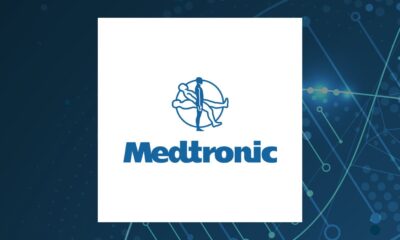Health
Rethinking Patient Portals: Meeting 2026 Healthcare Demands

The landscape of patient engagement is evolving rapidly as healthcare organizations reassess the effectiveness of their patient portals. A recent study reveals that 65 percent of patients find managing their healthcare overwhelming, indicating a significant gap between current portal capabilities and patient expectations. This disconnect could contribute to adverse health outcomes, with 54 percent of patients believing that improved support in navigating the healthcare system would enhance their overall health.
As the healthcare industry continues to adapt to changes wrought by the COVID-19 pandemic, it is clear that the traditional patient portal model no longer suffices. Patients are now accustomed to heightened digital interactions in various aspects of their lives, leading them to evaluate their healthcare experiences through a consumer lens. Many view their interactions with healthcare technology similarly to those with streaming services or social media platforms, expecting not just efficiency but also a more connected and personalized experience.
Beyond Basic Functionality
Historically, patient portals have primarily served as information repositories. However, today’s patients seek a more comprehensive experience that includes empathetic support and personalized insights. Modern portals should provide access to:
– Detailed information about their conditions.
– Care management strategies tailored to individual needs.
– Financial guidance, including insurance eligibility.
Currently, adults spend an average of eight hours per month coordinating healthcare for themselves or loved ones. Upgrading patient portals could significantly alleviate this burden, transforming what has been a cumbersome process into a more efficient and user-friendly experience.
Many healthcare organizations possess the technological foundation through electronic health record (EHR) systems. Yet, there remains a lack of coordination in utilizing these tools to meet contemporary patient needs. For instance, appointment scheduling remains a common point of frustration for both patients and healthcare providers. With the wealth of data available—such as physician schedules and typical appointment frequencies—patients now expect a more streamlined system. Current patient portals often fall short, lacking the advanced features necessary to enhance the user experience.
Creating a Seamless Patient Experience
To redefine patient engagement by 2025, healthcare organizations must prioritize a seamless experience that integrates technology effectively. The key attributes of an upgraded patient portal should include:
– **Integration**: Consolidating multiple data sources into a single, accessible platform.
– **Proactivity**: Utilizing predictive analytics to offer tailored health tips and insights.
– **Personalization**: Ensuring that each digital interaction mirrors the unique experience of an in-person consultation, potentially enhanced by artificial intelligence.
To meet the rising expectations of patients, healthcare organizations should adopt an external perspective when evaluating their systems and applications. Understanding how patients wish to interact with healthcare providers can illuminate opportunities for improvement. Moreover, building digital solutions that eliminate fragmentation in the healthcare journey will empower patients and enhance their overall experience.
The emergence of advanced technologies, such as generative AI, offers promising avenues for modernizing patient portals. These tools can accelerate development timelines and streamline software testing, ultimately leading to an improved patient experience in a shorter timeframe.
Patients are increasingly unwilling to remain passive in their healthcare journey. They are likely to select providers based on the ease of interaction and access to vital health information. A generic patient portal—characterized by a mere list of lab results and visit summaries—fails to meet today’s demands. Instead, patients are looking for meaningful insights and open communication throughout their healthcare experience.
Healthcare organizations now face the challenge of realigning their digital strategies to deliver the patient experience that modern consumers expect.
Luiz Cieslak, Senior Vice President at CI&T, emphasizes the need for this transformation. CI&T specializes in enhancing digital solutions for healthcare and life sciences, partnering with various organizations to improve patient and healthcare professional experiences. As the industry moves forward, embracing these changes will be crucial in fulfilling the needs of today’s healthcare consumers.
-

 Science3 weeks ago
Science3 weeks agoOhio State Study Uncovers Brain Connectivity and Function Links
-

 Politics3 weeks ago
Politics3 weeks agoHamas Chief Stresses Disarmament Tied to Occupation’s End
-

 Entertainment3 weeks ago
Entertainment3 weeks agoMegan Thee Stallion Exposes Alleged Online Attack by Bots
-

 Science1 month ago
Science1 month agoResearchers Challenge 200-Year-Old Physics Principle with Atomic Engines
-

 Entertainment3 weeks ago
Entertainment3 weeks agoPaloma Elsesser Shines at LA Event with Iconic Slicked-Back Bun
-

 World3 weeks ago
World3 weeks agoFDA Unveils Plan to Cut Drug Prices and Boost Biosimilars
-

 Top Stories3 weeks ago
Top Stories3 weeks agoFederal Agents Detain Driver in Addison; Protests Erupt Immediately
-

 Business3 weeks ago
Business3 weeks agoMotley Fool Wealth Management Reduces Medtronic Holdings by 14.7%
-

 Entertainment3 weeks ago
Entertainment3 weeks agoBeloved Artist and Community Leader Gloria Rosencrants Passes Away
-

 Politics1 month ago
Politics1 month agoNHP Foundation Secures Land for 158 Affordable Apartments in Denver
-

 Top Stories3 weeks ago
Top Stories3 weeks agoOrioles Hire Craig Albernaz as New Manager Amid Rebuild
-

 Business3 weeks ago
Business3 weeks agoHome Depot Slashes Prices on Halloween Favorites Up to 75%








